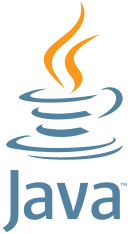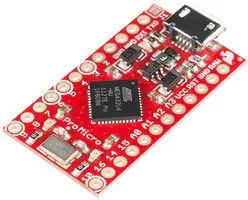June 2021
 Implementing Apache ActiveMQ-style broker meshes with Apache Artemis
Implementing Apache ActiveMQ-style broker meshes with Apache ArtemisBoth Apache ActiveMQ and Apache Artemis have infrastructure for creating networked message broker meshes. However, their implementations are rather different, which can be problematic for integrators who want to migrate from ActiveMQ to Artemis. This article describes how to replicate -- so far as possible -- ActiveMQ mesh behaviour in Artemis.
Categories: middleware
 Using Apache Avro for passing Java objects through a message broker, with a schema registry
Using Apache Avro for passing Java objects through a message broker, with a schema registryThis article extends my earlier article on using Avro with a message broker. In this article I explain how to use the Apicurio schema registry to store Avro schema artefacts that are shared by multiple clients, rather than providing local copies for each client.
Categories: software development, Java, middleware
 Playing Zork 1 on a CP/M emulator on Linux
Playing Zork 1 on a CP/M emulator on LinuxIn the last few years there has been a revival of interest in 8-bit microcomputers from the 70s and 80s. Many of these were based on the Zilog Z80, and many ran CP/M. This article about getting started with CP/M using an emulator on Linux.
Categories: general computing, retrocomputing, Z80
 Capturing database change records using Debezium and Camel
Capturing database change records using Debezium and CamelThe notion of change data capture (CDC) is becoming increasingly significant, in an IT industry that stores and manages an ever-increasing volume of data. This article describes how to begin using the Debezium CDC framework with Apache Came, to collect and process change records from disparate data sources.
Categories: software development, Java, middleware
 JGemini -- a Java-based browser for Project Gemini protocols and content
JGemini -- a Java-based browser for Project Gemini protocols and contentIntroducing a simple graphical browser for Project Gemini content; back to the 90s -- in a good way.
Categories: retrocomputing, Java
 Deploying the Mosquitto MQTT message broker on OpenShift (part 2)
Deploying the Mosquitto MQTT message broker on OpenShift (part 2)Part 2 of my article on installation the Mosquitto MQTT message broker on OpenShift.
Categories: OpenShift, middleware
 Deploying the Mosquitto MQTT message broker on OpenShift (part 1)
Deploying the Mosquitto MQTT message broker on OpenShift (part 1)This article describes a method for deploying the Mosquitto MQTT message broker on OpenShift. Such an installation might potentially be useful in its own right, but the main purpose of the article is to discuss issues that are relevant packaging any application in an OpenShift-compatible way.
Categories: OpenShift, middleware
 Using a Pi Zero and throw-away parts to provide a serial terminal for retrocomputing projects
Using a Pi Zero and throw-away parts to provide a serial terminal for retrocomputing projectsMany retrocompting projects are designed to be used with a serial terminal. It's easy to emulate a terminal using a desktop workstation, but more authentic to use a dedicated serial terminal. Real VT52-style terminals are expensive, and difficult to transport because they use CRTs. VGA and small HDMI monitors, however, are dirt cheap, as are USB keyboards. This article is about using a Raspberry Pi Zero with a custom Linux to convert a cheap monitor and keyboard into a serial terminal.
Categories: Raspberry Pi, retrocomputing
 Back to BASICs with a Pro Micro microcontroller
Back to BASICs with a Pro Micro microcontrollerBack in the 70s, desktop computers booted to BASIC. In this article, I describe my efforts to implement a BASIC programming environment on the SparkFun Pro Micro, a small Arduino-like 8-bit microcontroller.
Categories: general computing, retrocomputing, Arduino
